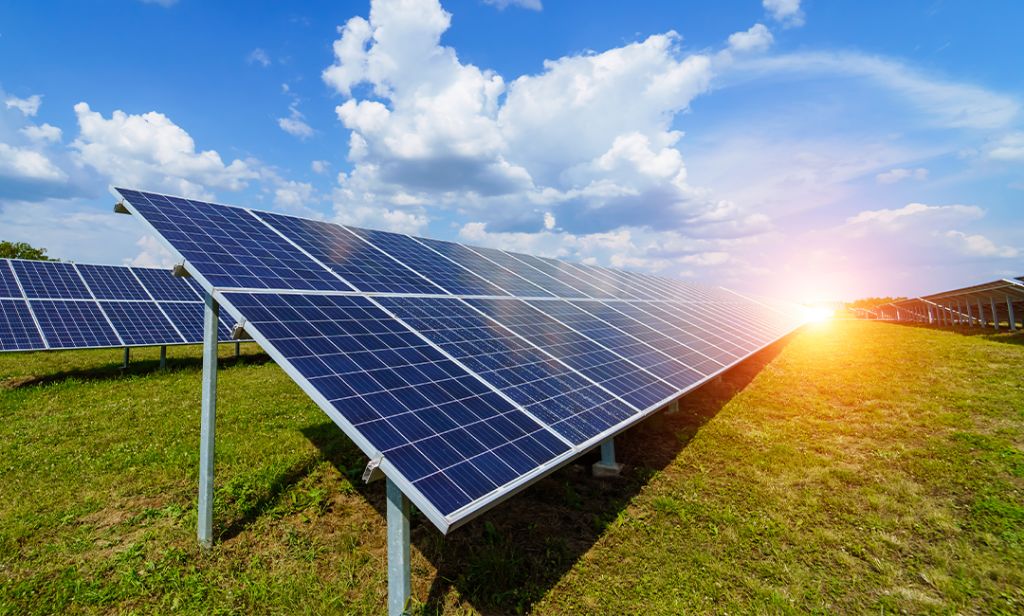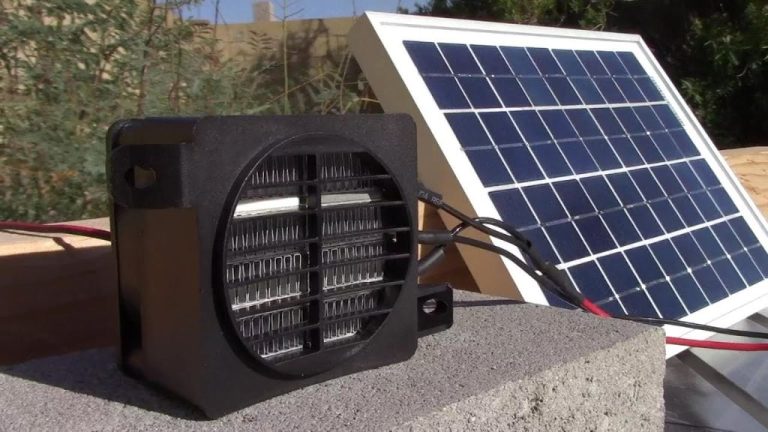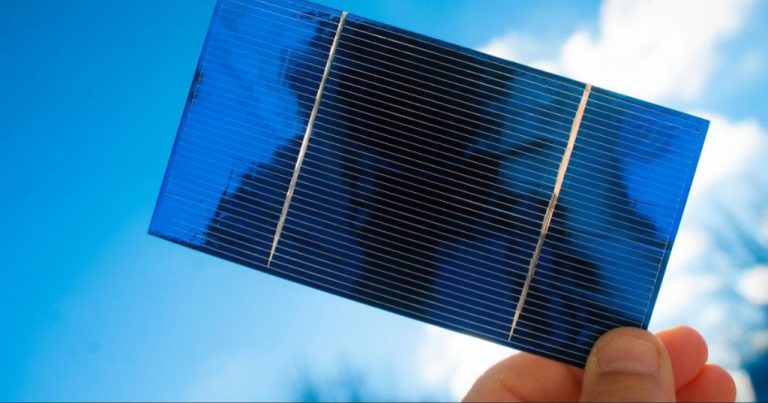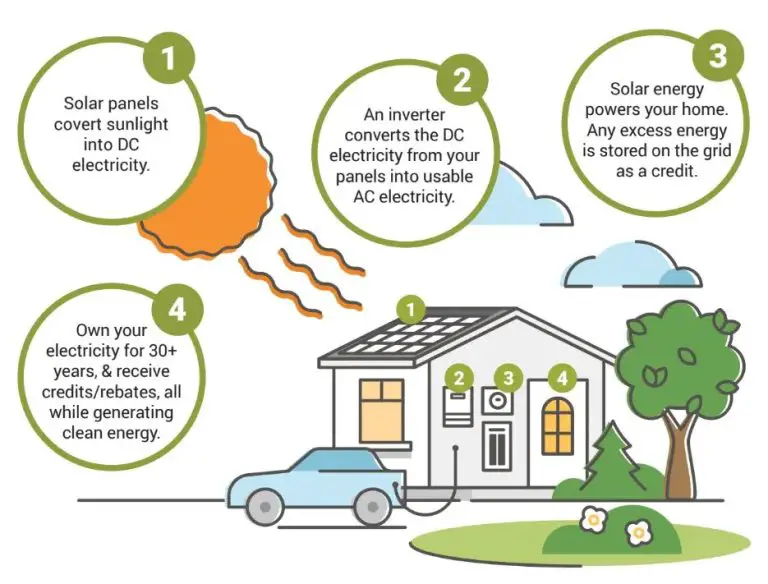What Is The Solar Farm Near Primm?
The Primm Solar Farm is located in Primm, Nevada, right on the California border near the Mojave Desert. It is one of the largest solar farms in the United States, spanning 3,200 acres of land next to Interstate 15. The massive solar farm generates enough renewable energy to power all of Primm’s 12,000 residents.
The Primm Solar Farm first began operations in December 2016 after being developed by SolarReserve. It utilizes concentrated solar power technology and has a capacity of 250 megawatts. The solar farm features vast fields of mirrored panels that reflect sunlight onto central towers to heat molten salt, which then generates steam to produce electricity.
Overall, the Primm Solar Farm provides a significant amount of renewable energy to help power southern Nevada and reduce dependence on fossil fuels. Its massive scale and advanced technology make it a landmark in the continued growth of large-scale solar farms.
History
The Ivanpah Solar Electric Generating System facility was developed and built by BrightSource Energy and Bechtel. Construction began in 2010 and was completed in 2014 at a cost of $2.2 billion (Wikipedia).
The Ivanpah facility was built in response to a mandate in California to generate 33% of electricity from renewable energy by 2020 (DOE). The massive solar thermal power plant was designed to help meet California’s renewable energy goals through utility-scale solar power generation.
Located in the Mojave Desert near Primm, Nevada, Ivanpah was strategically positioned to maximize solar irradiation from the sun. Its close proximity to Las Vegas allowed the solar power generated to help meet peak energy demands in that region (Energy.gov).
Overall, Ivanpah represented a major investment in utility-scale concentrating solar thermal power to advance renewable energy in California and provide carbon-free electricity to the grid.
Technology
The Ivanpah Solar Electric Generating System utilizes power tower solar thermal technology to generate electricity (1). This technology uses mirrors called heliostats to focus sunlight onto a central receiver at the top of a tower. The focused sunlight heats molten salt flowing through the receiver, generating steam that then spins a turbine to produce electricity (1).
Specifically, Ivanpah has three 459-foot tall power towers surrounded by 173,500 computer-controlled heliostats or mirrors (2). These heliostat mirrors track the sun throughout the day and reflect the sunlight onto the towers. At the top of each tower, the focused sunlight heats water to create steam to run the turbines (3).
The plant has over 2.2 million square feet of mirrors installed with a total capacity of 392 MW of solar thermal energy (2). The steam turbines are coupled with conventional generators designed by General Electric (3).
The solar field was engineered and constructed by Bechtel Corporation while BrightSource Energy developed the unique solar power tower technology (1)(2).
Sources:
(1) https://en.wikipedia.org/wiki/Ivanpah_Solar_Power_Facility
(2) https://www.energy.gov/lpo/ivanpah
(3) https://www.energy.ca.gov/powerplant/solar-thermal/ivanpah-solar-energy-generating
Capacity
The Ivanpah Solar Electric Generating System has a total capacity of 392 megawatts (MW), making it the largest concentrated solar thermal plant in the world [1]. With this amount of capacity, Ivanpah can generate enough electricity to power over 140,000 homes in California [2].
The facility consists of three separate power plants, each with its own power tower and tens of thousands of mirrors known as heliostats. Unit 1 has a gross capacity of 126 MW, Unit 2 is 133 MW, and Unit 3 is 133 MW [3]. Together, the three plants make Ivanpah one of the largest solar thermal facilities in the world.
Ownership
The Ivanpah Solar Electric Generating System is currently owned by NRG Energy, BrightSource Energy, Google and Bechtel. NRG Energy and BrightSource Energy were the original developers of the project. In 2011, Google invested $168 million in the Ivanpah project, taking a minority ownership stake. This was part of Google’s initiative at the time to invest in renewable energy projects. Bechtel was brought on as the engineering, procurement and construction contractor for the project. According to the U.S. Department of Energy, BrightSource Energy owns approximately 86% of the project, while NRG Energy and Google each own around 7%.
The project has not changed ownership since its initial development and construction. BrightSource Energy and NRG Energy continue to be the primary owners, while Google maintains its minority stake. Bechtel’s role was temporary during the construction phase. The project did receive a $1.6 billion loan guarantee from the Department of Energy in 2011, which enabled securing the financing needed for such a massive project.
Impact
The Ivanpah Solar Power Facility has had both positive and negative impacts since its construction. On the positive side, the facility provides environmental benefits by generating renewable solar energy. According to the U.S. Department of Energy, Ivanpah is expected to reduce carbon dioxide emissions by more than 400,000 tons per year, which is equivalent to taking 72,000 cars off the road annually (U.S. Department of Energy).
The project has also created economic opportunities. Ivanpah employed over 1,000 workers during construction and supports 61 permanent jobs to operate the facility. The majority of the supplies and services needed for the plant were provided by in-state companies, bringing revenue and business to local communities (U.S. Department of Energy).
However, Ivanpah has also faced criticism for its negative impact on the environment. The concentrated solar thermal technology requires a significant amount of water for cooling and cleaning the mirrors. This has raised concerns about excessive water usage in an already arid region (The Guardian). There have also been issues with some birds being killed after flying through the intense heat above the towers.
Challenges
The Primm solar farm has faced some notable challenges since its construction. One major issue has been the high maintenance costs. According to an article by Wired, the Ivanpah solar thermal plant, which uses similar technology to Primm, has struggled to be economically viable due to the constant cleaning and maintenance required to keep the mirrors working efficiently. This highlights the maintenance challenges faced by large-scale solar plants in dusty desert environments.

Transmitting the power from the remote solar farm to population centers has also been an issue. New transmission lines had to be constructed to bring the electricity over 200 miles to Las Vegas according to The Guardian. Building long-distance transmission is costly and faces regulatory hurdles.
As for future expansion, there are concerns that additional large solar plants could negatively impact the fragile Mojave desert ecosystem. More studies may be needed to determine the carrying capacity for solar development in the area. The Primm solar farm took environmental mitigation steps like preserving tortoise habitat, but further expansion could present new ecological challenges.
Comparisons
At 392 MW, Ivanpah is one of the largest solar thermal power stations in the world. It is over 3 times larger than the next biggest solar farm in Nevada, which is the 100 MW Crescent Dunes Solar Energy Project (Wikipedia).
Compared to photovoltaic solar projects in Nevada, Ivanpah’s generation capacity is massive. The 250 MW Boulder Solar Project near Boulder City is the largest PV solar farm in the state, and Ivanpah produces over 150 MW more power (AZ Animals). This highlights the tremendous scale of the Ivanpah facility.
Future
There are ongoing plans to expand Ivanpah Solar Power Facility to additional phases even beyond the current planned phases 2 and 3. Significant investments will be needed to fund hundreds more heliostats and towers. Storage technology will also be crucial to allow the plant to dispatch power when the sun is not shining. According to the Bureau of Land Management, “The BLM will continue evaluating potential sites where solar projects would be well-suited”1. Community involvement in planning will be important as some residents have raised concerns about the environmental and visual impacts of large-scale solar in the area.
Conclusions
In summary, the solar industry has experienced exponential growth in recent years, with solar energy capacity in the U.S. expected to double in the next 5 years (https://www.seia.org/us-solar-market-insight). The solar farm near Primm is an example of how solar power is becoming an increasingly important part of our energy mix. Solar energy has the potential to provide clean, renewable electricity to homes and businesses across the country. As the technology continues to advance and costs decline, solar power will play a key role in building a sustainable energy future and mitigating the effects of climate change. The growth of large-scale solar facilities like the Primm solar farm underscores solar’s importance and signals a transition away from fossil fuels.






